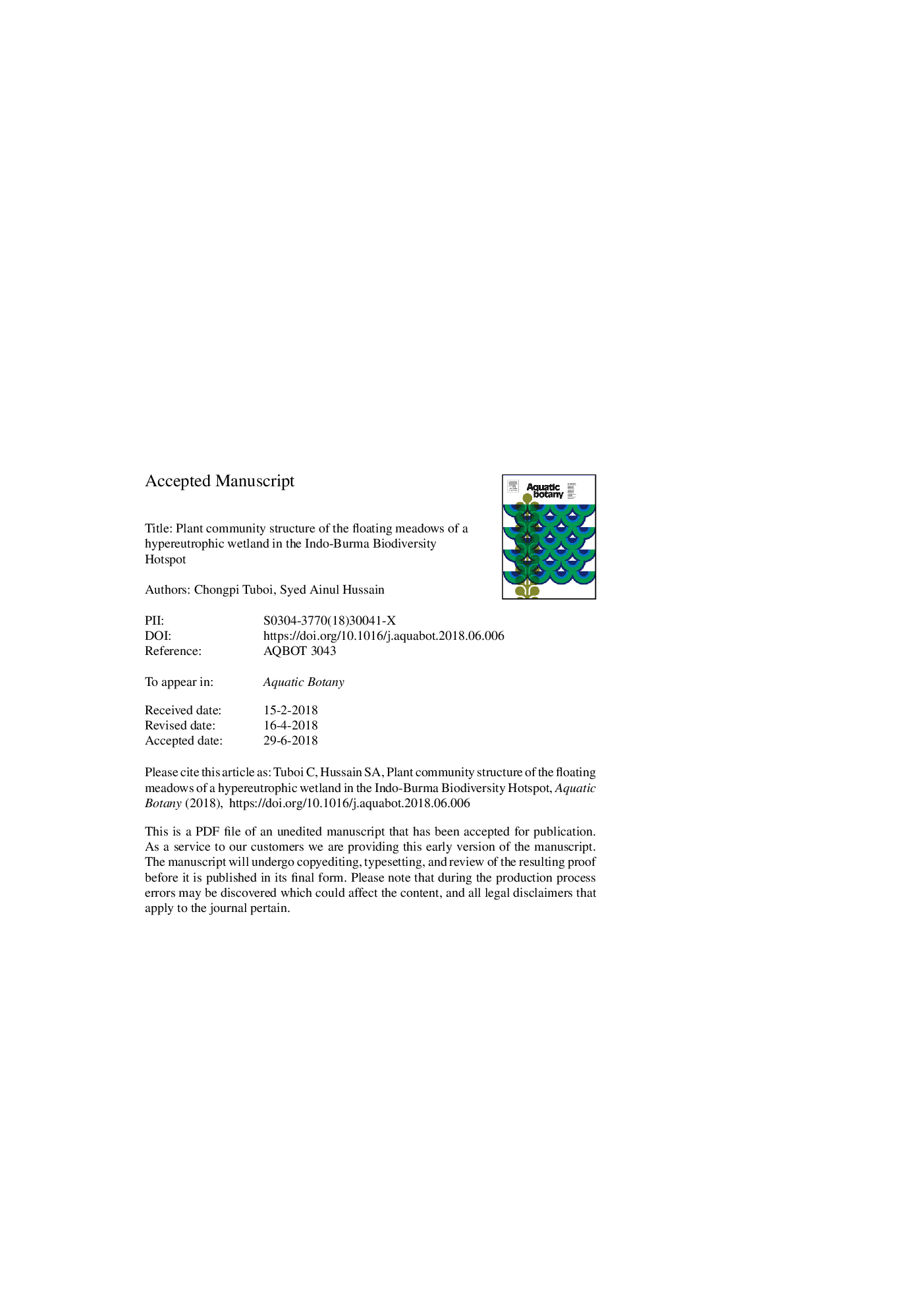| کد مقاله | کد نشریه | سال انتشار | مقاله انگلیسی | نسخه تمام متن |
|---|---|---|---|---|
| 8883548 | 1625792 | 2018 | 39 صفحه PDF | دانلود رایگان |
عنوان انگلیسی مقاله ISI
Plant community structure of the floating meadows of a hypereutrophic wetland in the Indo-Burma Biodiversity Hotspot
ترجمه فارسی عنوان
ساختار جامعه گیاهی از مراتع شناور یک تالاب هیپرتروفی در نقطه هندبوک تنوع زیستی در
دانلود مقاله + سفارش ترجمه
دانلود مقاله ISI انگلیسی
رایگان برای ایرانیان
کلمات کلیدی
تالابها، مراتع شناور، جامعه گیاهی، تنوع گونه ها، الهه گوزن،
موضوعات مرتبط
علوم زیستی و بیوفناوری
علوم کشاورزی و بیولوژیک
علوم آبزیان
چکیده انگلیسی
Floating meadows are widespread globally, but ecological information on their vegetation structure and functions is lacking. We examined the structure and composition of the vegetation of the floating meadows of Keibul Lamjao National Park, Manipur, located in the Indo-Burma Biodiversity Hotspot. The floating meadows in the park are crucial for the survival of the globally threatened Eld's deer (Rucervus eldii) and the hog deer (Axis porcinus). Vegetation data were collected from 936 plots of size 0.5â¯mâ¯Ãâ¯0.5â¯m during winter and summer. The vegetation data were analyzed using two-way indicator species analysis (TWINSPAN) with PC-ORD version 4.20. Nine plant communities were observed in summer and eight in winter, with two communities being common to the two seasons. The overall Shannon and Simpson diversity indices, species richness and evenness of the communities varied significantly between summer and winter. The evenness (0.713) and diversity (Hâ², 1.335) indices in summer indicate high species diversity, which is mainly due to homogenous distribution of the species. The Ivlev Electivity Index (IVI) indicates that plant communities have a specific preference for meadow thickness, i.e., communities that prefer thick meadows avoid thin meadows. Competition among plant communities in terms of moisture and nutrient availability appears to be low due to the hypereutrophic condition of the lake and the floating nature of the meadows. But Capillipedium spp., Phragmites karka, Leersia hexandra and Zizania latifolia appear to exhibit monodominance, as indicated by their frequency and abundance in most of the communities. Protection of areas with thick meadow from further deterioration is crucial for the long-term conservation of the Eld's deer and associated wild ungulates.
ناشر
Database: Elsevier - ScienceDirect (ساینس دایرکت)
Journal: Aquatic Botany - Volume 150, November 2018, Pages 71-81
Journal: Aquatic Botany - Volume 150, November 2018, Pages 71-81
نویسندگان
Chongpi Tuboi, Syed Ainul Hussain,
